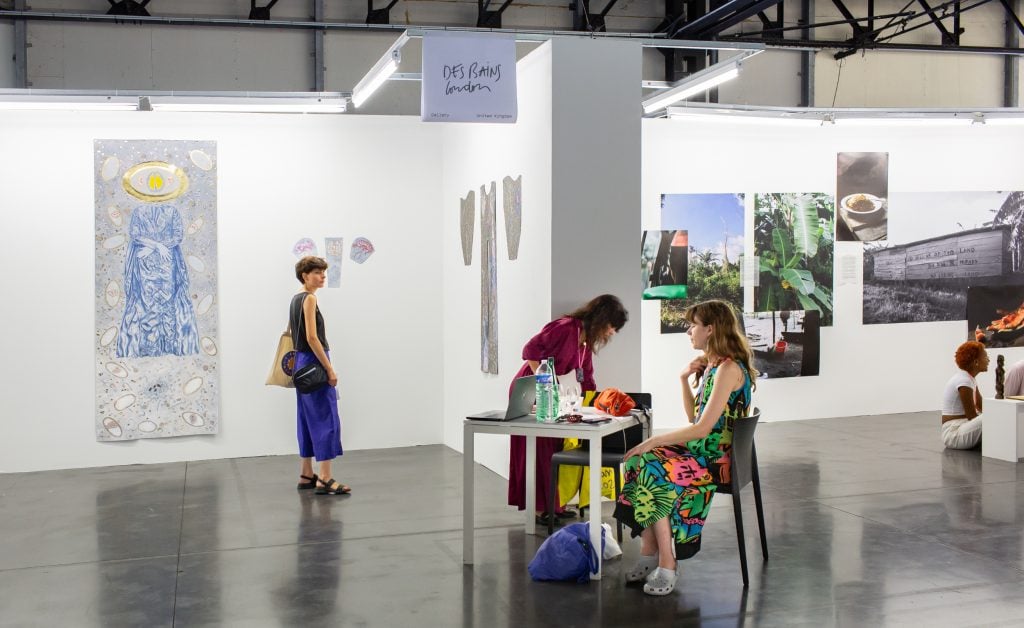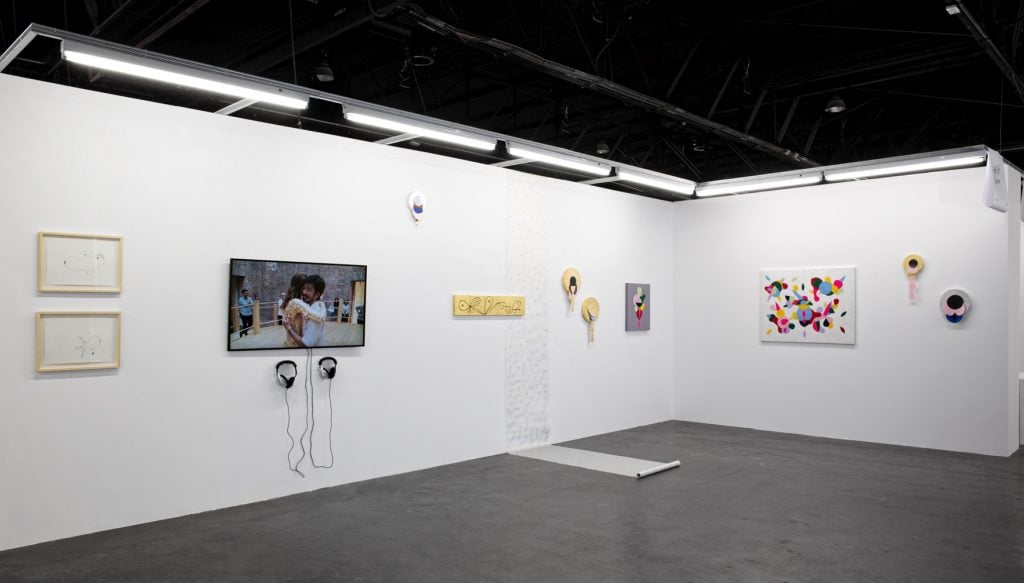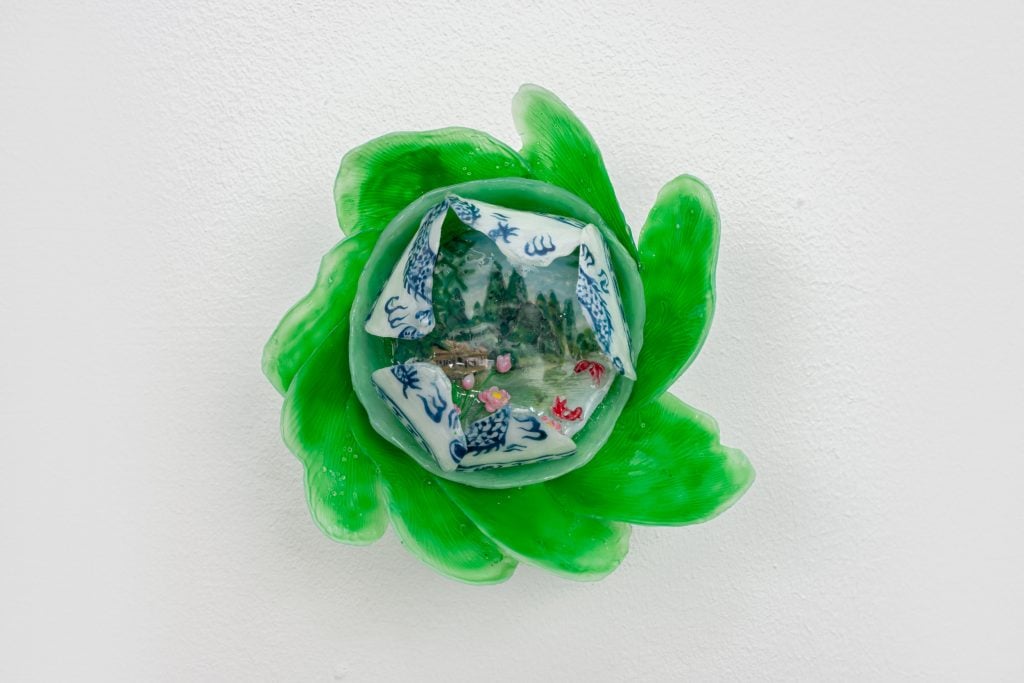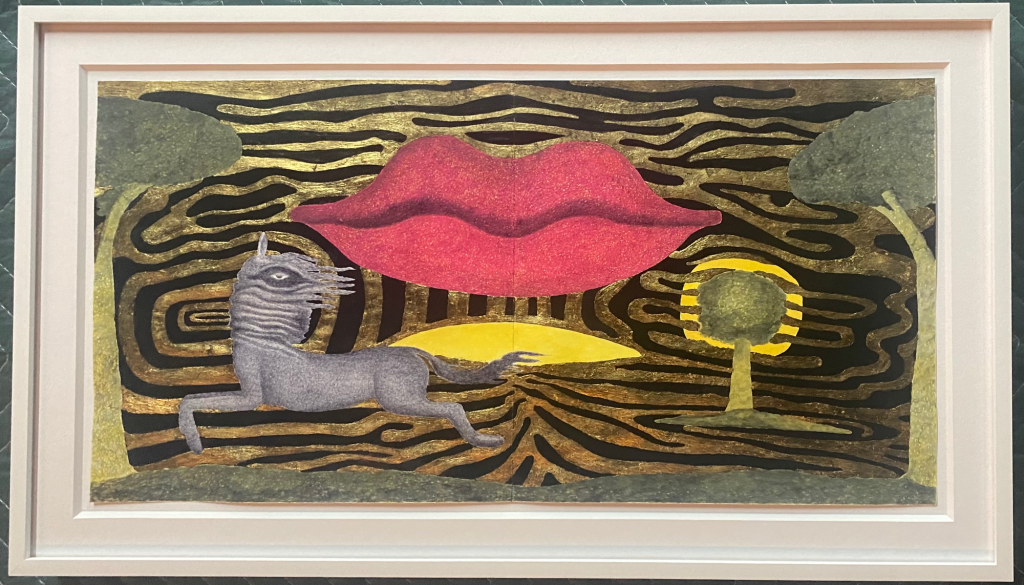Art Fairs
Marseille’s Art-O-Rama Is Helping a New Generation of Gallerists Get Their Foot in the Door
Fledgling galleries take their first steps... and any sales are a bonus.

Fledgling galleries take their first steps... and any sales are a bonus.

Jo Lawson-Tancred

The fate of small to mid-size galleries has felt particularly precarious lately. Surviving the pandemic was one thing, but the onslaught of unfavorable economic conditions only intensified when energy prices rose across Europe, followed by global inflation, and, sure enough, a dreaded market correction. It is hardly surprising that the past few years have also seen a slew of gallery closures, among them even some well-established names like Simon Lee and the 80-year-old Marlborough Gallery.
Still, it appears there will always be brave new hopefuls setting up pokey premises on the outskirts of their city. With one foot in the in-crowd and a keen eye for upcoming trends, they don’t seem to have much trouble building a profile, but what else is needed for these small businesses to survive? What change does the next generation of dealers hope to see?
Art-O-Rama, founded in 2007 in the southern French city of Marseille, has established itself as the place where fledgling galleries take their very first steps. It offers exhibitors the chance to take center stage among a roster of some 40 peers, before they graduate to the margins of mega-fairs and get lost in a sea of bigwigs. Notable galleries that started out at Art-O-Rama and are now regulars at fairs like Art Basel and Frieze include Lisbon-based Madragoa, Munich’s Nir Altman, and Nicoletti, which just announced its move to a larger space in London.
Sans Titre from Paris debuted at Art-O-Rama in 2018 and is now a regular exhibitor. Founder Marie Madec, a member of the fair’s selection committee, estimates that about 70 percent of this year’s roster are newcomers, which, unusually, is described as “an amazing turnover” given the fair’s mission to support emerging galleries.

HATCH at Art-O-Rama 2024 in Marseille, France. Photo: Margot Montigny.
“Art-O-Rama is a great example of a fair where rising stars can co-exist with older galleries,” said curator Trinidad Fombella, citing Galerie Georges-Philippe & Nathalie Valois and In Situ – Fabienne Leclerc as more established names from Paris at this year’s edition. “Encouraging a more collaborative approach between galleries of different sizes, generations and cities, would be something I would like to see more.”
Ask a French gallerist, and Art-O-Rama is a gentle return to work after taking all of August off. Ask another from the U.S. or U.K., and the fair’s beachside location and 2 p.m. starts might be the closest thing they’ve had to a vacation this year. In any case, participants praised the fair’s fun, easygoing energy, which feels as very “Marseille” as the heavily graffitied tobacco factory-turned-cultural complex where it is held, known as La Friche or “The Wasteland.”
The most obvious necessity for a fair to be inclusive of younger galleries is an accessible price point. A non-profit backed by the municipality, Art-O-Rama has a booth fee of €3,500 ($3,900) for galleries less than seven years old and €4,000 ($4,500) for the rest. Also important are the seven prizes that result directly in acquisitions, residencies, or reimbursement. London-based Public Gallery, which debuted at Art-O-Rama in 2022, won the opportunity last year to have a work by Nils Alix-Tabling bought by Pebeo. This year, it won the Marval Prize for its presentation of paintings by Stefania Batoeva, benefitting from a €15,000 ($16,600) acquisition fund that comfortably offset the cost of participating so that any additional sales made a profit.
In recent years, major fairs have crept towards the exclusive exhibition of figurative painting as dealers react to a market downturn by playing it safe. Art-O-Rama’s low prices take much of this pressure off, making it a rare showcase for the weird and wonderful. One standout booth was shared by Studio/Chapple and Xxijra Hii, neighboring galleries from Deptford, south London.

Hoa Dung Clerget, Chinoiserie (jade – bowl) 13 (2024). Photo courtesy of Studio/Chapple.
Studio/Chapple presented exquisite, jewel-like pieces affixed to the wall that were made by Hoa Dung Clerget using U.V. gel polish and techniques borrowed from Nail Art. They are £900 ($1,180) each. Bulbous alabaster carvings by Hannah Morgan, courtesy of Xxijra Hii, were installed in a surprising, deconstructed metal frame and listed between around £1,500–£3,000 ($1,975–$3,950).
“Ema [O’Donovan, founder of Xxijra Hii] and I work a lot with sculpture and installation and more experimental practices that can sometimes sit left field to the commercial mainstream,” said Louis Chapple, founder of Studio/Chapple. He believes art fairs could challenge themselves to make more out of multidisciplinary work, which can otherwise be overlooked in such a market-focused context. “My program works with sound and performance and it would be interesting to see how fairs could expand into other art forms rather than just having static booths. I’d love to do an event connecting the community of Marseille with the fair through music, a more universally accessible entry point.”
Some exhibitors have traveled from far afield, and the presence of three galleries from Chicago’s relatively small art scene is testament to the impact of word-of-mouth recommendation in these decisions. Marc LeBlanc returned this year, having last exhibited at Art-O-Rama in 2022, with two Chicago artists Jonah Koppel and Mindy Rose Schwartz. He hopes that the market downturn will encourage a more thoughtful approach to collecting.

Jonah Koppel, Untitled (2024). Photo courtesy of M.LeBlanc.
“A lot of things that people purchased in the last decade are going to end up in the rubbish heap,” he said. “Collectors are asking themselves what their principles for building a collection are and I think that’s a really healthy realization.”
Many dealers at Art-O-Rama emphasized that, realistically speaking, the location’s promise lies less in serious sales than in its proximity to the South of France’s fast-growing crop of serious institutions. Roaming the aisles were local curators keen to spot the next big thing, a lifeline at a time when the market has lost its appetite for speculating on ultra-contemporary art.
“There are formidable collections scattered throughout Provence. That’s one thing all of us who came from the States really latch onto” said Leblanc. “As global as we think art is, it is still very provincial in a way.”
Other galleries were also lured by the location, hoping a quick border crossing might put them in the eye of European collectors who have been chased away by Brexit. “In the U.K., the ratio between collectors and galleries is super off-kilter,” said Ed Leeson, co-founder of 243 Luz, which is debuting at Art-O-Rama with works by Ben Gomes.
“Our model is staying out of London,” he added, of the gallery’s base in the English coastal town of Margate, where cheap rent has resulted in a growing alternative arts scene. “We have really low overheads and now we’re going to focus on five or six fairs next year and try to operate that way.”
Is there any way to boost sales for emerging artists in this context? “I think there’s a whole generation of people who could be collectors, they just don’t realize it yet,” suggested Leeson. “I don’t think their barrier to entry is financial, it’s cultural. Those are the people who are going to keep galleries like us alive.”